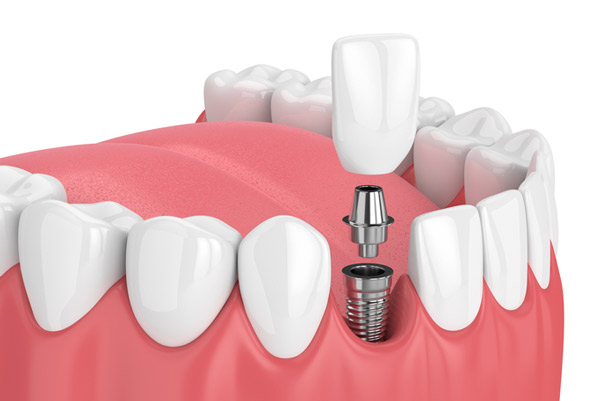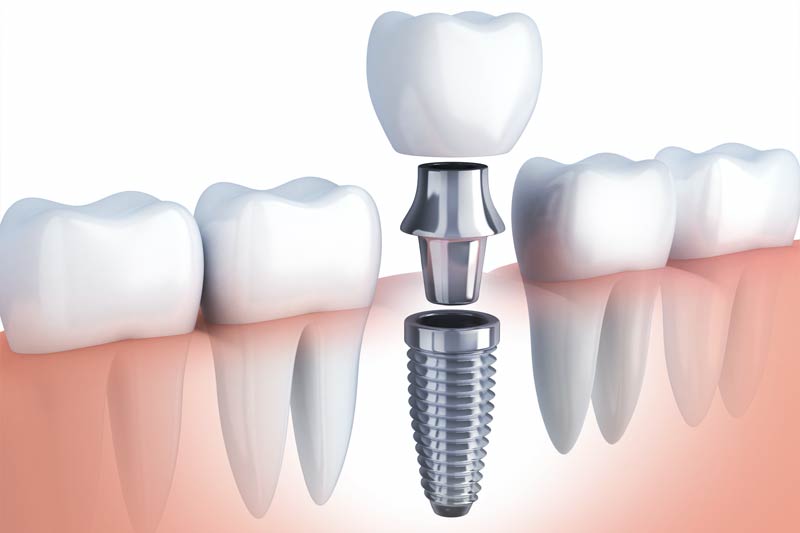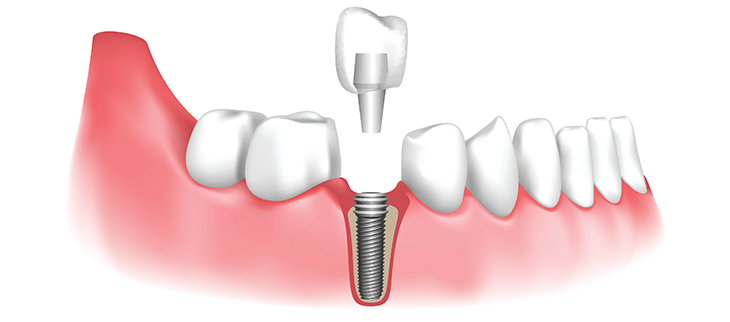Smile Care Condit OH What Are Dental Implants? Types, Benefits, and More
Johnstown Dental Sunbury OH Permanent Dental Implants
Dental implants have revolutionized restorative dentistry, providing a dependable alternative to traditional methods for replacing missing teeth. The integration of dental implants with the site here jawbone is a posh organic course of often known as osseointegration. This process not only anchors the implant securely look here but additionally helps preserve jawbone health, stopping the bone loss typically related to click over here missing teeth.
The dental implant itself is often manufactured from titanium, a biocompatible material that the body accepts. When an implant is placed in the jaw, it's designed to closely mimic the root of a natural tooth, which is important for effective integration. The titanium surface encourages the growth of bone cells, enabling the jawbone to bond with the implant over time.
Dental Care Associate Hartford OH What Are Dental Implants? Types, Benefits, and More

Several stages constitute the osseointegration process. Initially, when the implant is surgically positioned into the jaw, a therapeutic interval is required for the encircling bone to start reworking. During this time, the bone grows across the implant, making a stable and steady basis. This therapeutic time can vary, typically lasting a number of weeks to a few months, relying on varied elements, together with the person's general health and the precise location of the implant.
The function of surrounding bone quality is essential. High-density bone sometimes offers a better setting for osseointegration in comparability with lower-density bone. Specialists typically evaluate the standard and amount of bone earlier than the implant placement to determine the best plan of action, which can involve bone grafting procedures in instances of insufficient bone quantity. Grafting enhances the probabilities of successful integration by making a more robust base for the implant.
The organic mechanisms behind osseointegration involve varied cellular actions. Osteoblasts, the cells liable for bone formation, migrate to the implanted area and start to lay down new bone materials. Simultaneously, the surface of the titanium implant undergoes changes that facilitate this bonding course of. Some newer implant designs incorporate surface modifications to additional enhance organic integration.
Dental Center Columbus OH Dental Implant Procedure: What You Need to Know Before Surgery
Throughout the integration process, the role of blood supply can't be overstated. An sufficient blood provide nourishes the bone and ensures the correct functioning of the cells concerned in the therapeutic and integration course of. Improved blood move results in quicker healing and better outcomes, which is why surgical methods and aftercare typically prioritize sustaining or enhancing blood circulation to the positioning of the implant.
Improvements in surgical strategies additionally contribute considerably to the success rates of dental implants - Smile Care New Albany OH. Minimally invasive methods and guided implant surgery permit for more precise placement of implants, reducing trauma to the surrounding tissues and potentially dashing up the therapeutic time. The less trauma experienced by the jawbone can result in a extra favorable surroundings for osseointegration
Dentist Sunbury OH Your Local Guide to Dental Implants

How an individual maintains their oral hygiene after receiving an implant can considerably affect integration success. Proper care around the implant site helps prevent infections, which might disrupt the healing course of. Regular dental check-ups are additionally very important to monitor the health of each the implant and the encircling gum and bone tissues.
Long-term success with dental implants is usually linked to factors corresponding to way of life selections. Patients who smoke or have uncontrolled diabetes might expertise decrease rates of osseointegration. These conditions intervene with healing and blood provide, making it crucial for people contemplating implants to discuss their health history with their dentist.
After the profitable integration of the implant, the next section includes inserting the prosthetic restoration, similar to a crown. The ultimate restoration must match comfortably and functionally integrate with the present dentition. Dentists Sunbury OH. Proper alignment and occlusion play important roles in how nicely the implant will perform over time
Premier Dental Sunbury OH Dental Implants: Services and Expertise
Dental implants current a long-lasting solution that helps preserve the integrity of the jawbone. When a tooth is lost, the bone that when anchored its root begins to deteriorate. Implants stimulate the bone equally to natural teeth, triggering the jaw to take care of its density and strength. This stimulation is crucial for preventing the sunken facial appearance that always accompanies tooth loss.
In conclusion, the combination of dental implants with the jawbone entails a fancy interaction of organic and mechanical components. Understanding the osseointegration course of can empower people to make knowledgeable decisions about their dental health. By appreciating the importance of selecting a talented dental skilled and adhering to post-operative care, sufferers can obtain optimum outcomes and revel in restored operate and aesthetics for many years to come.

- Dental implants mimic the structure of natural teeth and provide a secure basis by integrating with the jawbone via a course of referred to as osseointegration.
- The biocompatibility of titanium, generally used for dental implants, plays an important position in promoting successful bonding with bone tissue.
- Osseointegration typically begins within a couple of weeks post-surgery, with the implant floor progressively becoming enveloped by bone cells.
- The mechanical stability of implants is enhanced by their surface roughness, which encourages bone progress and improves the integration course of.
- Immediate loading of implants may be possible in certain instances, depending on bone density and the patient’s total dental health.
- Over time, the jawbone responds to the presence of an implant by present process transforming, contributing to the long-term success of the procedure.
- Factors corresponding to oral hygiene, smoking habits, and systemic health conditions can considerably impact the mixing process of dental implants.
- Regular follow-ups and imaging methods, similar to X-rays, can help monitor the success of osseointegration and detect potential complications early.
- The preservation of surrounding bone structure is enhanced by the stimulation provided by dental implants, which may help prevent bone loss in adjacent areas.
- Successful integration not solely restores performance to the tooth but in addition contributes significantly to the aesthetics of the affected person's smile and facial structure.undefinedWhat are dental implants and the way do they work with the jawbone?undefinedDental implants are titanium posts surgically inserted into the jawbone to serve as synthetic tooth roots. Once positioned, they undergo a process known as osseointegration, the place the jawbone naturally fuses with the implant, creating a stable basis for the replacement tooth.
How does osseointegration occur?undefinedOsseointegration is a biological process the place bone cells grow and connect to the floor of the dental implant. This typically takes several months, throughout which the implant becomes firmly anchored within the jawbone, making certain strength and stability for the bogus tooth.
Dentists Galena OH Frequently Asked Questions About Dental Implants
What elements affect the success of dental implant integration?undefinedKey factors include the quality and quantity of the jawbone, the affected person's total health, and oral hygiene practices. Adequate bone density is essential, as inadequate bone may impede successful integration.
Is the pain during dental implant placement significant?undefinedMost patients report minimal discomfort in the course of the process, as native anesthesia is used. Post-operative pain is generally manageable with over-the-counter pain relief medications, and most discomfort subsides within a couple of days.
How long does the mixing course of take?undefinedTypically, osseointegration takes about three to 6 months. However, this could range primarily based on particular person therapeutic processes and the particular conditions of the jawbone.
Can anybody get dental implants?undefinedMost people are candidates for dental implants; however, certain conditions such as uncontrolled diabetes or severe gum disease may have an effect on eligibility. A thorough evaluation by a dental skilled is critical to discover out suitability.
Pediatric Dentist Johnstown OH Understanding Dental Implants: A Comprehensive Guide
What may be done if there is not enough jawbone for integration?undefinedIf there could be insufficient bone, procedures like bone grafting can be carried out to augment the jawbone. Once the graft heals, dental implants can then be positioned, allowing for profitable integration.
Are there long-term care considerations after getting dental implants?undefinedYes, sustaining excellent oral hygiene is significant for the longevity of dental implants. Regular dental check-ups and cleanings also help prevent issues and ensure the ongoing health of the surrounding bone and gum tissue.
Dental Care Associate Hartford OH Common Dental Implant Problems and How to Avoid Them
How do dental implants evaluate to different tooth replacement options?undefinedDental implants are sometimes thought of superior to dentures and bridges due to their durability, stability, and the preservation of jawbone health. Unlike other choices, implants fuse with the jawbone, which helps preserve bone density and facial structure.